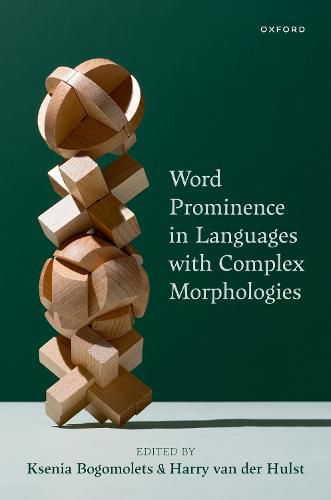Readings Newsletter
Become a Readings Member to make your shopping experience even easier.
Sign in or sign up for free!
You’re not far away from qualifying for FREE standard shipping within Australia
You’ve qualified for FREE standard shipping within Australia
The cart is loading…






This volume focuses on the theoretical and analytical challenges that languages with complex morphologies pose for the theory and typology of word-level prosodic phenomena. The morphological complexity and phonological length that are characteristic of words in these languages make them a particularly fruitful ground for investigating the effects of both phonological and morphological factors in the assignment of prominence. The first three chapters in the volume explore general theoretical issues pertaining to word prominence in synthetic languages, including the issue of ‘wordhood’ and the empirical, theoretical, and methodological issues with delineating word-level prominence and the higher-level prosodic phenomena in these languages. These are followed by a series of case studies on stress, accent, and tone in a geographically and genetically diverse set of languages with highly synthetic morphologies including languages of the Americas, Europe and Asia, and Australia. The volume adopts an interdisciplinary perspective, combining phonetic, phonological, and morphosyntactic insights. It will be of interest not only to phonologists and morphologists, but to all those interested in the typological and theoretical issues relating to polysynthetic languages.
$9.00 standard shipping within Australia
FREE standard shipping within Australia for orders over $100.00
Express & International shipping calculated at checkout
This volume focuses on the theoretical and analytical challenges that languages with complex morphologies pose for the theory and typology of word-level prosodic phenomena. The morphological complexity and phonological length that are characteristic of words in these languages make them a particularly fruitful ground for investigating the effects of both phonological and morphological factors in the assignment of prominence. The first three chapters in the volume explore general theoretical issues pertaining to word prominence in synthetic languages, including the issue of ‘wordhood’ and the empirical, theoretical, and methodological issues with delineating word-level prominence and the higher-level prosodic phenomena in these languages. These are followed by a series of case studies on stress, accent, and tone in a geographically and genetically diverse set of languages with highly synthetic morphologies including languages of the Americas, Europe and Asia, and Australia. The volume adopts an interdisciplinary perspective, combining phonetic, phonological, and morphosyntactic insights. It will be of interest not only to phonologists and morphologists, but to all those interested in the typological and theoretical issues relating to polysynthetic languages.